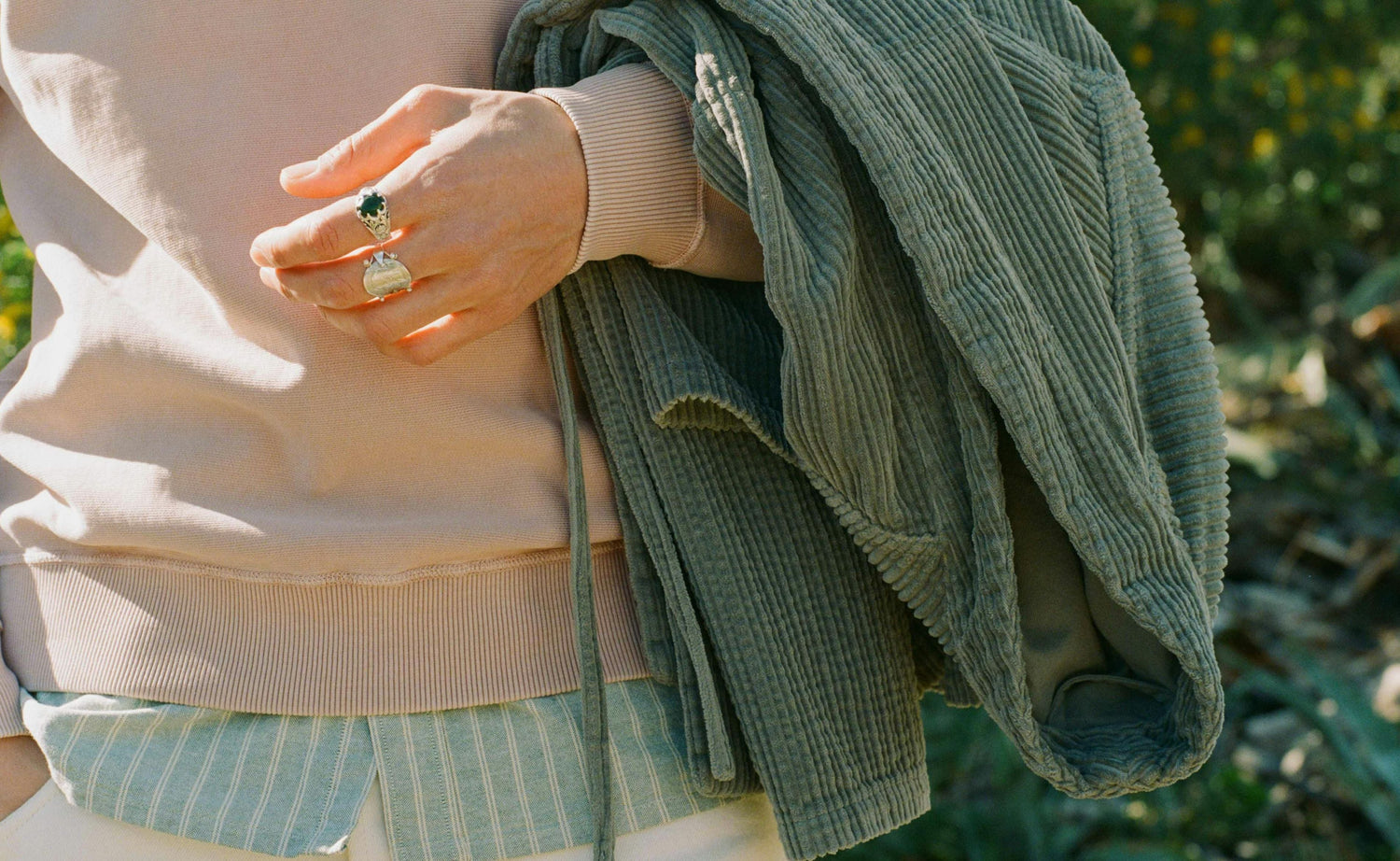Hello friends, here we go again for an episode of (Very) Well Dressed!
Today I'm going to give you some simple but very useful tips for combining different colors in your outfit.
And what makes these tips simple to understand , coherent, and easy to implement...
This is because they rely on essential notions that explain how colors work together.
I gave you these notions in episode 6 , where I listed in particular the "easy" and widespread colors among humans, where I explained how contrasts and harmonies work , or what the clarity, saturation and hue of a color are...
So if you haven't already, check it out! 😉
As for putting these concepts about colors into practice, here is what we are going to cover...
1. Contrast or harmony: a matter of personality
First point: once we know how to recognize and qualify contrasts, and explain harmonies (which are their opposite), a simple question arises...

An outfit that is “high in harmony” and therefore very “low in contrasts”.
What is the right balance between the two?
2. Where harmony really matters
Just because it's called "harmony" doesn't mean it's necessarily better...
Don't be fooled: it is quite possible to have too much "harmony" . (In this case, we would talk about having colors that "blend" too much).
Beyond that, style jargon and its favorite expressions ("marry," "associate," "match") can lead us to believe that absolutely all the colors in an outfit must be harmonized together.
Look: even the best sometimes fall for it.
I would say that there are specific places where the harmony between two pieces is more important than elsewhere...
3. Contrast at anchor points (accessories!)
What is an anchor point?
I might as well say it right away, because I intend to bring this term up often: these are the areas that demarcate the different parts of your body.
They allow the eye to locate our proportions and recognize a human silhouette.
In other words, it mainly concerns the joints. And in terms of clothing, it is the clothes that are worn on these areas, and which mark them.
And guess what, often they are accessories: watch, bracelet, gloves (wrist / hands), scarf (neck), headgear (head), socks, shoes (ankles / feet)...
The most obvious of all is the waist. A belt worn over high-waisted pants marks the waist as an anchor point.
This is where we realize that the advice to "dare to use more colors" on accessories has a reason for being that we don't suspect...
The reason we always hear is that it's "more fun" , and that they are smaller pieces. They are said to present less "risk" (financial as well as stylistic).
And that's true. But from a silhouette point of view, the unsuspected reason why accessories must contrast is also because they help to delineate, frame the body.
4. Horizontal contrast (layering!)
There are a thousand and one ways to succeed with layering. And a thousand ways to mess it up, too.
On the other hand, I know two ways of doing things that will guarantee you... Hmm. No, well, maybe not guarantee you perfection, let's not exaggerate.

This layering, for example, follows the first "method".
Let's say that there are two rather "safe" methods for doing layering, which make your task easier.
Especially when you don't have tops in 300 different shades to find the "perfect match".
Hint: it has to do with color clarity.
5. Vertical contrast (combine high and low!)
We saw the horizontal arrangement, logically, we must see the vertical arrangement.
Many people worry about whether the colors of two rooms will look good together side by side.
But sometimes, two pieces each in shades that go well together could look very strange... if we swapped the position of their colors. Especially because their placement can affect our perception of body shapes.
Here too, I am already announcing: there is still a question of clarity.
...
Enjoy watching!
PS: In this video I am wearing...
- A BonneGueule flannel vest
- A BonneGueule cotton & camel wool t-shirt
- A Piece of Chic Bandana




